Photographic Documentation Department has more than 4161 exhibits, of which the vast majority are single photos and negatives, including glass plates, the collection also consists of a few albums. The photographs come from the late nineteenth and early twentieth century, documenting destruction of Polish cities - primarily Wroclaw – during the war and their reconstruction, as well as postcards, mainly from the late nineteenth and early twentieth century, showing the architectural buildings from different regions of Europe, as well as postcards from the1920s and 1930s showing Wroclaw and Silesia.
Extensive and particularly interesting in terms of content is the documentation of the devastation of Wroclaw by Krystyna Gorazdowska, cooperating with local photographer Rudolf Jagusch, whose photos of destruction of the city are also in the collections of the Museum of Architecture. Gorazdowska documented ruins and the bustling people with journalist enthusiasm. She often photographed the area of the Old Town and she depicted the panorama of ruins from the Town Hall tower.
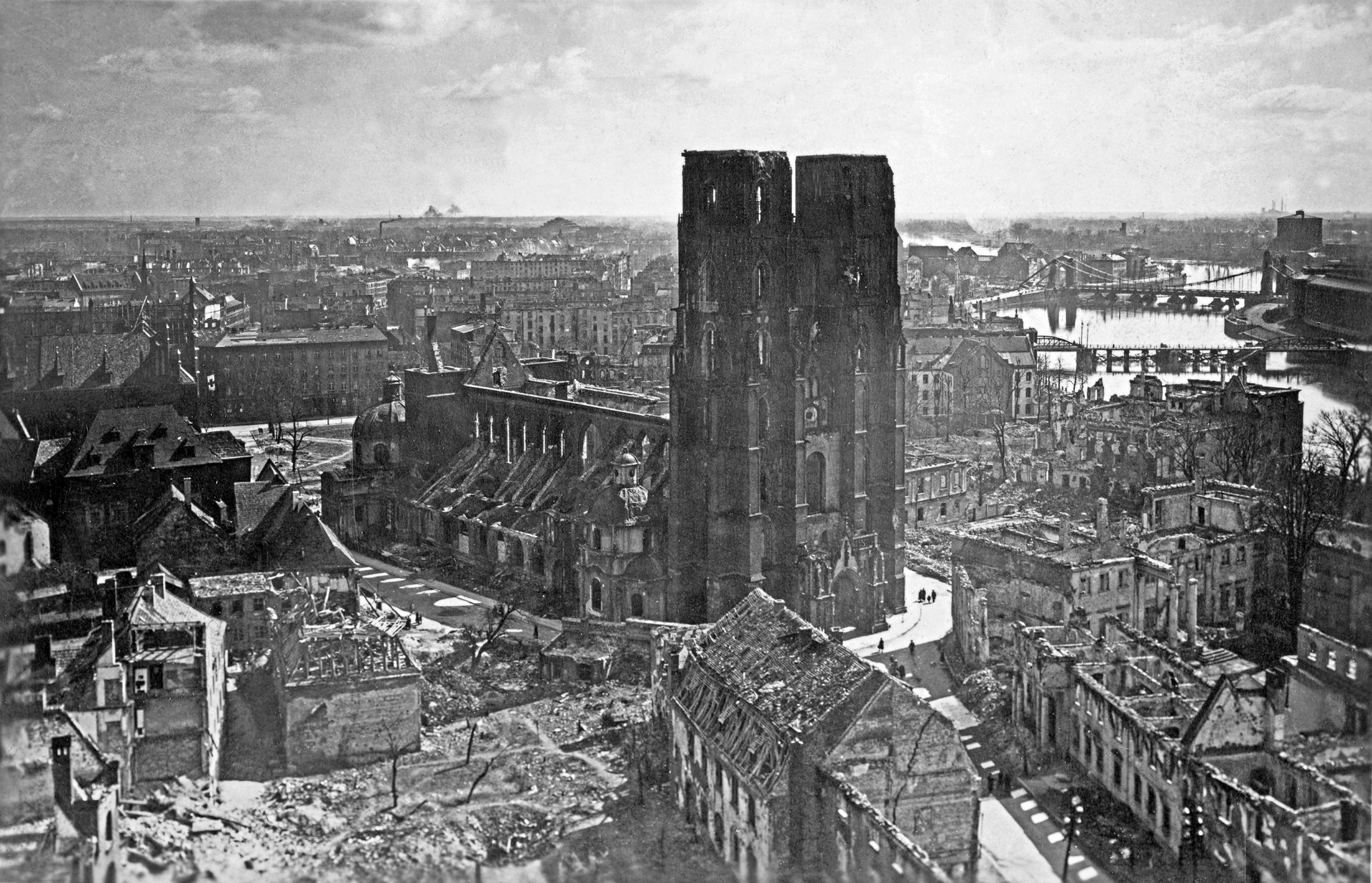
Wroclaw, the ruined Cathedral, view from the tower of the Church of the Holy Cross, photo by Krystyna Gorazdowska, 1946
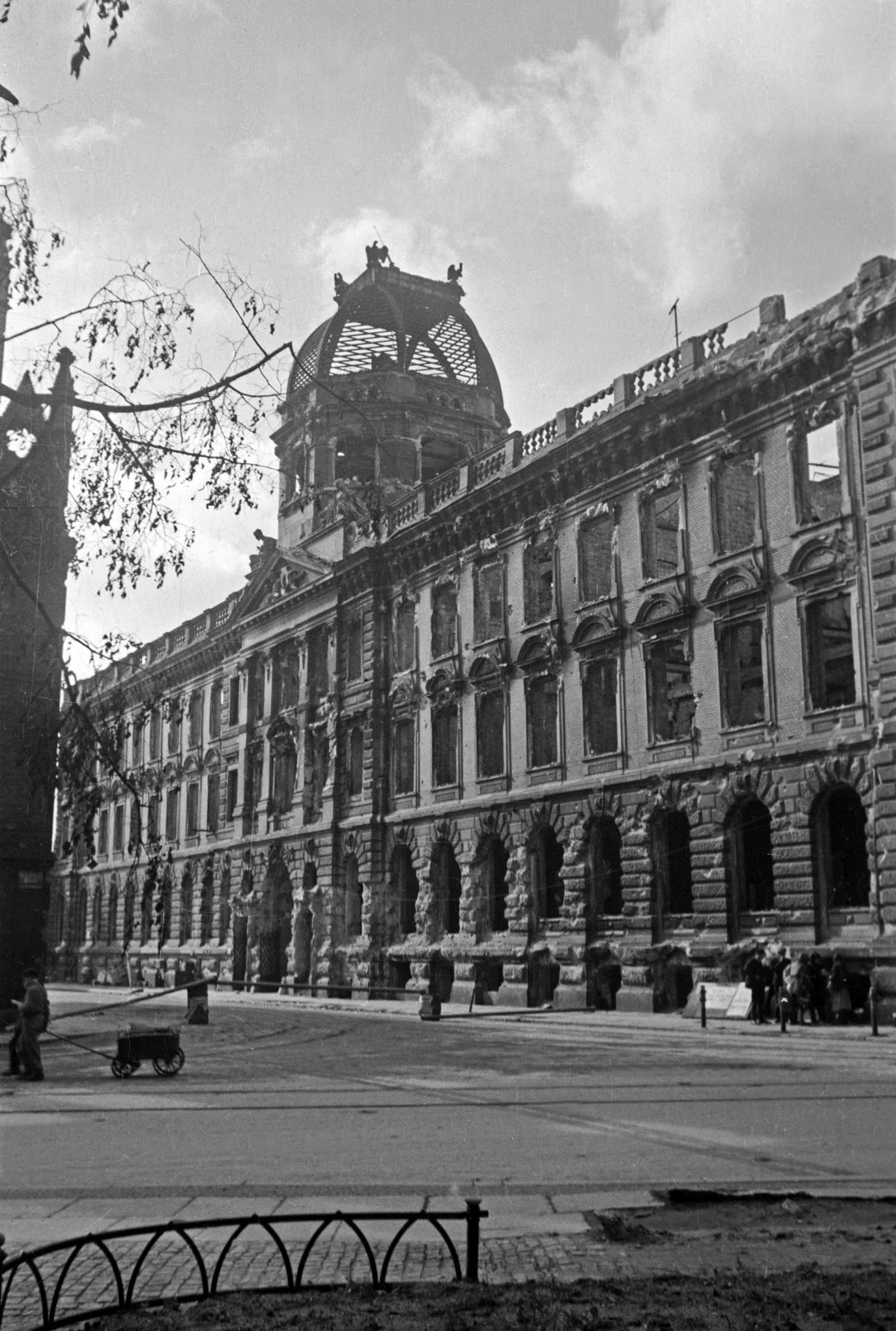
Wroclaw, a ruined building of the Main Post Office (nowadays non-existent) at bł. Czesława Street, photo by Krystyna Gorazdowska, 1946
A substantial part of the department collection are the photos and negatives taken by Janina Mierzecka. She belonged to the Lviv Photographic Society and the Association of Polish Art Photographers and she was particularly interested in artistic photography. After the war she came to Warsaw, then in 1949 she moved to Wroclaw. She continued her career here, founding a photographic studio in the State Museum and in the Medical Academy, where she worked with doctors on creating a catalog of skin diseases. She also photographed the city – taking pictures of both historic buildings and newly emerging residential houses, churches, department stores, public buildings, sculptures and architectural details. The museum collection also includes negatives and photos from her trip across Europe and the Middle East, as well as photographs taken before 1939.
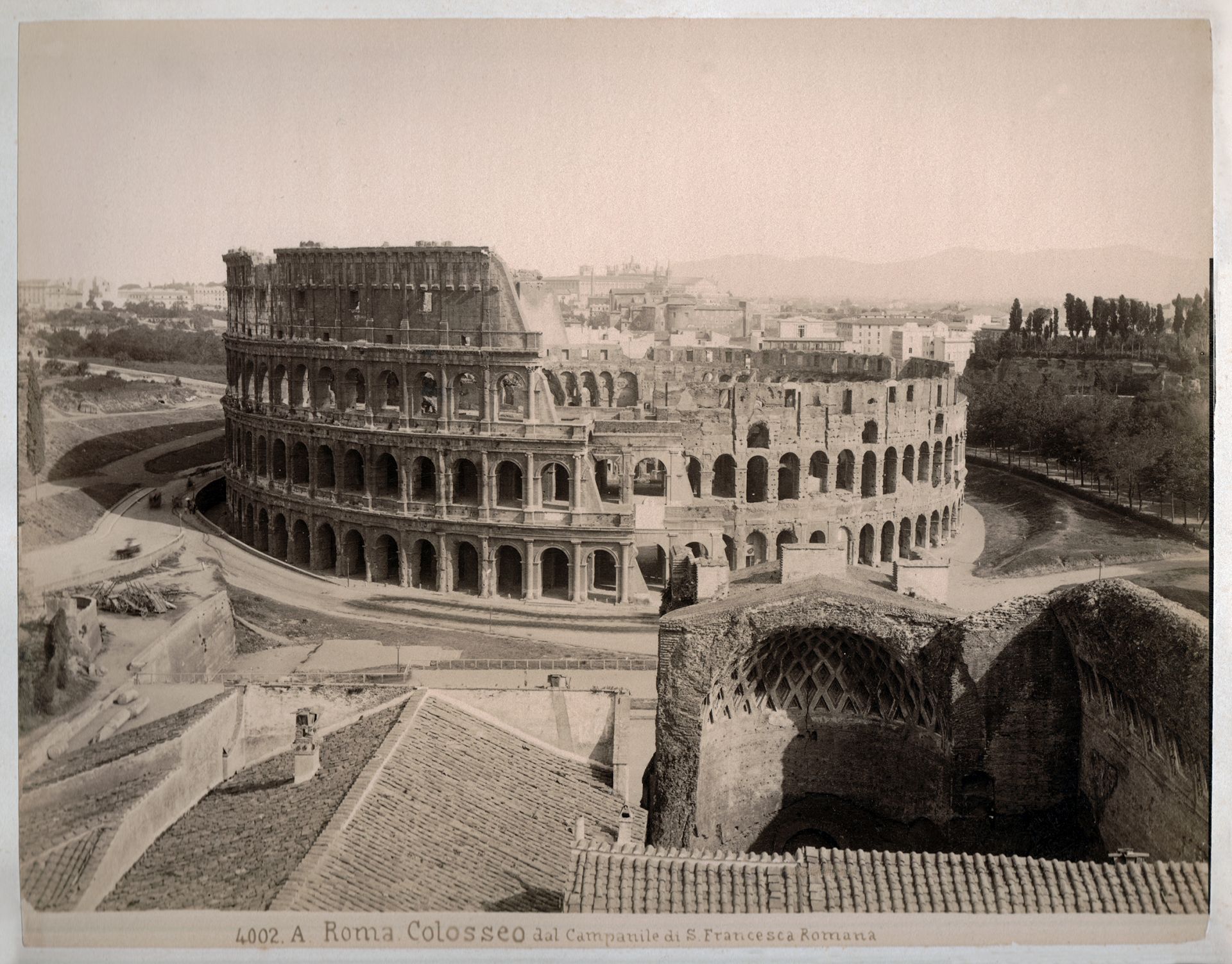
Rome, the Colosseum, photo from the turn of the nineteenth and twentieth century
The museum collection also includes works of an artist and a photographer Jan Bułhak. He was born in Vilnius and settled in Warsaw after the war. He was a co-founder of the Association of Polish Art Photographers (ZPAF) and the founder of the Polish Photographic Society. He photographed landscapes and architecture. The collection includes the Vilnius album of his artistic photographs taken in 1921, photos of various buildings taken in Wroclaw and other towns in Lower Silesia, the ruins of Warsaw, taken in 1945-1949, as well as photos from the Recovered Territories Exhibition: pavilions, exhibits and people visiting the Wroclaw exhibition in 1948.
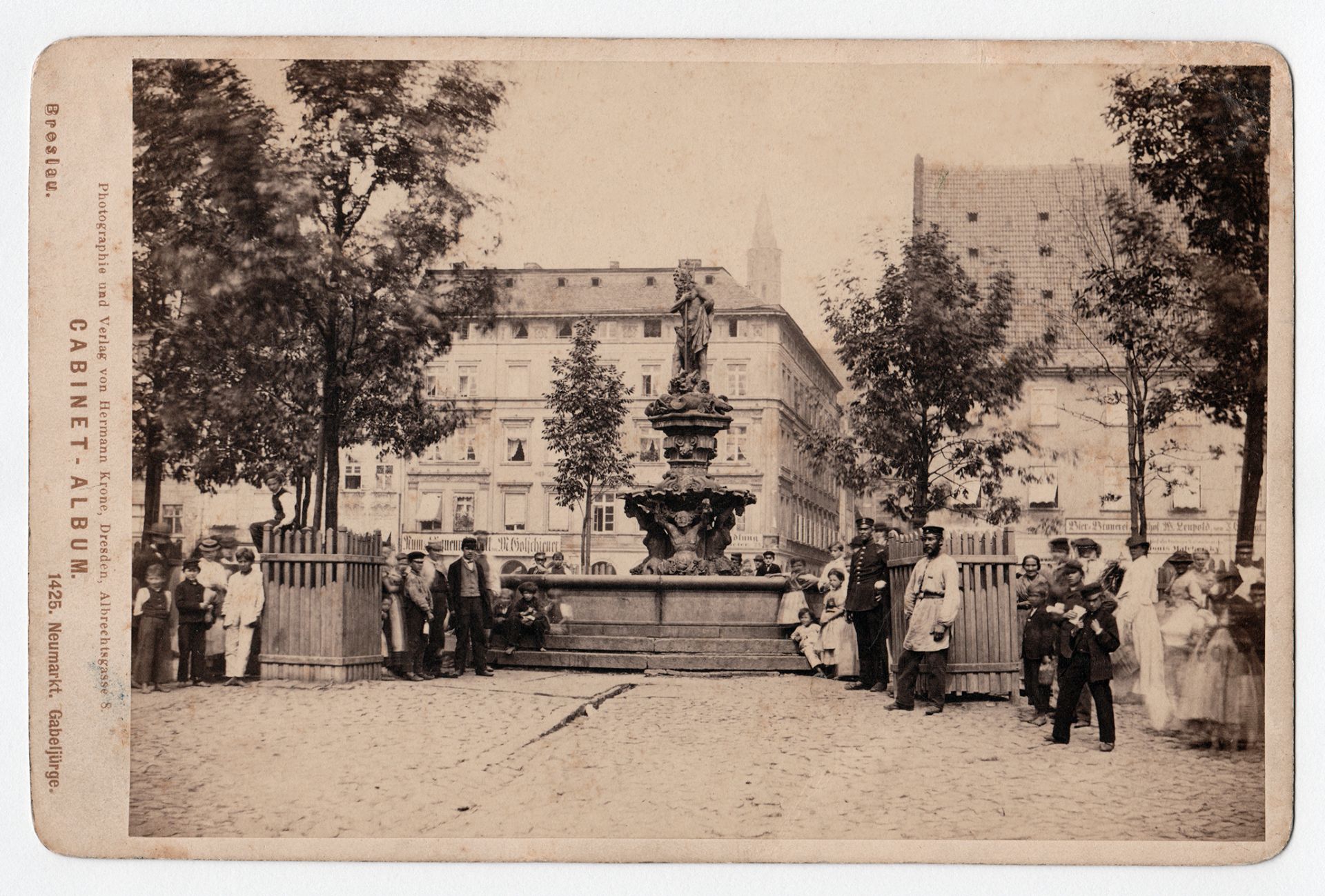
Wroclaw, Neptune fountain on Nowy Targ Square (Neumarkt), 1870s, photographed and published by Hermann Krone
Pictures from the 1920s constitute another interesting part of the collection - inventory of Wroclaw housing estates of Popowice and Szczepin and terraced houses from the area of Grunwaldzki Square, taken by Heinrich Klette photo studio from Wroclaw and probably commissioned by the architect Theo Effenberger, the author of many designs of buildings depicted in the photographs.
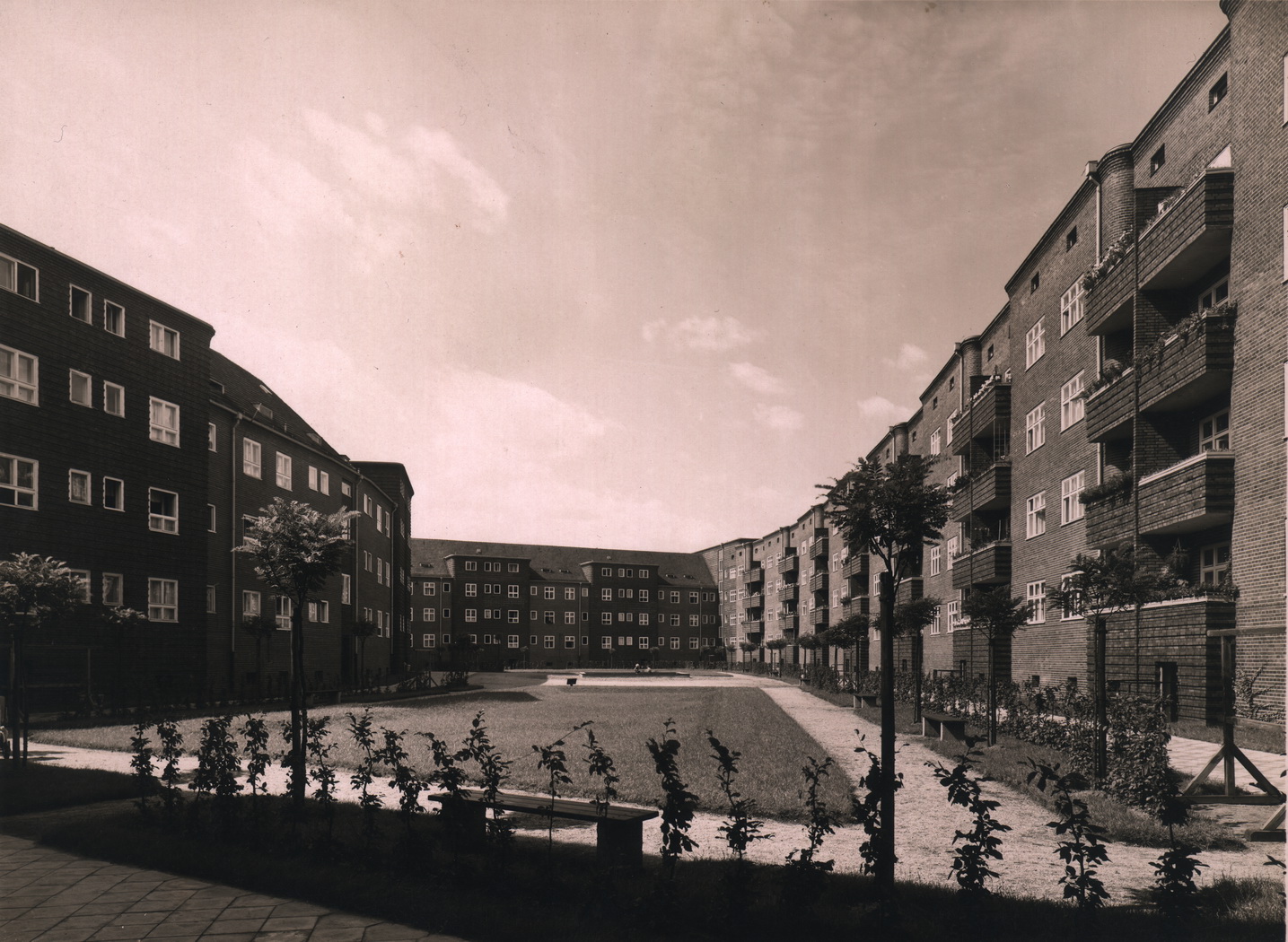
Wroclaw, a non-existent block residential house with internal square and children’s playground in the area of Szprotawska Street in Szczepin district (Westend), photo by Heinrich Klette, around 1927
The collection also includes aerial photos taken by Tadeusz Drankowski, a photojournalist of Słowo Polskie; a set of 31 pictures from 1938-1939, taken by amateur photographer Roman Wesołowski, showing Lviv monuments and images of sacred and defense architecture from the collections of Lviv architect Jan Sas Zubrzycki, from the late nineteenth and early twentieth century. The photos were commissioned by the architect and used as reference material in the implementation of architectural designs.
Finally, the museum collection also includes postcards. Most of them come from the beginning of the twentieth century – printed cards, lithographs and photographs, both color, sepia and black-and-white. The postcards depict Wrocław, Lower Silesia, Kazimierz on the Vistula River (signed with the stamp of an architect Jan Koszczyc Witkiewicz) and other Polish cities, as well as Italy and Germany. There are also postcards of Lviv monuments and several of them shows the exhibition pavilions at the Eastern Fair in 1930. Acouple of postcards from 1948 shows photos of the Wroclaw Regained Territories Exhibition taken by Edward Falkowski, a co-founder of ZPAF. One of the recent acquisitions are negatives taken by an amateur photographer Jan Schwartz from 1945 depicting destroyed Wroclaw, and the Wroclaw album, donated by the family of Tadeusz Ptaszycki.




